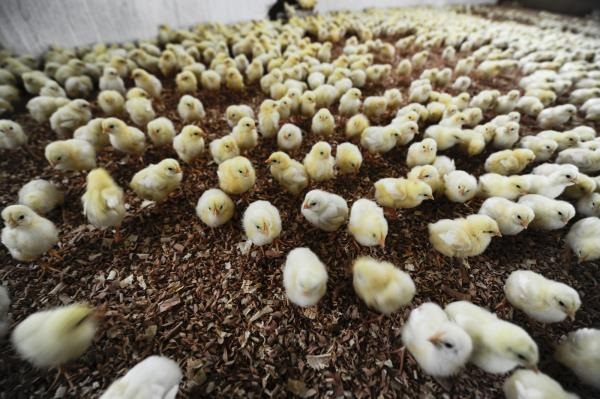
17 November 2017, Rome - Efforts to confront the spread of antimicrobial resistant pathogens on farms and in food systems are gathering momentum, thanks to strong backing by governments and technical support that is boosting national capacities to respond to the problem, FAO said today.
Antimicrobial medicines are widely used in livestock, poultry and aquaculture operations to treat or prevent diseases. The over-use and misuse of antimicrobial medicines for human and animal health, including routine use of growth promoters, drives the emergence and spread of disease-causing pathogens that are resistant to antibiotics and increasingly difficult to treat.
The first annual survey by FAO, the World Organization for Animal Health (OIE), and the World Health Organization (WHO) on progress made in establishing national AMR action plans, conducted in 2016, found more than 6.5 billion people - or more than 90% of the world's population - now live in a country that already has, or is developing a national action plan. Nearly all of these plans cover both human and animal health in line with the recommended "one health," multisectoral approach.
Since that survey, more countries have either taken strides towards finalizing their plans or have brought them fully into play.
The latest country to unveil a national action plan to tackle the spread of antimicrobial resistance using a "one health" approach is Kenya, which launched its national AMR policy and action plan this week.
Kenya is one of 12 African and Asian countries* participating in an FAO project, financed by the UK's Fleming Fund, to build national capacities to monitor and respond to AMR risks in food and agriculture.
Yet despite progress, the global push to tackle AMR is still in its early stages, and there are weak points that still need to be shored up -- particularly in the food and agriculture sectors of low- and middle income countries, key battlegrounds against "superbugs" resistant to conventional medicines - FAO also cautioned.
In particular, major gaps in data regarding where, how and to what extent antimicrobials are being used in agriculture need plugging, while national systems and facilities for tracking the occurrence of AMR in food systems and the surrounding environment need strengthening, according to the Organization.
What FAO is doing
"Low- and middle-income countries are particularly vulnerable to the devastating effects of AMR, a complex problem that requires coordinated action on a number of fronts in diverse sectors, supported by solid laboratory and epidemiological and regulatory capacity," said Ren Wang, FAO Assistan Director-General for Agriculture and Consumer Protection.
A disproportionate burden of infectious disease and gaps in resources, rules and legislation, and technical know-how and capacity can mean countries face additional challenges in addressing infectious diseases affecting livestock. They also make them especially vulnerable to AMR.
"This is where FAO, along with our partners, is leveraging our expertise and experience in assisting developing countries," Wang said.
"The goal is to help them develop the tools and capacity to implement best practices in animal and crop production, reduce the need for antimicrobials in food systems, develop surveillance capacity to assess the scale of AMR and track efforts to control it, and strengthen regulatory frameworks to minimise the misuse of antibiotics while simultaneously ensuring access to drugs for treating sick animals," he added.
Progress so far
In addition to supporting countries in developing or strengthening their action plans, FAO work supported by the Fleming Fund is helping countries improve their technical capacities for monitoring the use of antimicrobials and the spread of AMR organisms in food systems.
For this effort, FAO has developed a tool known as ATLASS that allows countries to conduct a "strength test" of their national laboratories and epidemiological systems.
Doing so can reveal where there are gaps that should be targeted with investment or other types of support.
The tool has already been deployed in six of the countries supported under the FAO-Fleming Fund project; an additional four national ATLASS assessments are due to kick off in in the coming months.
Similar FAO-led work, funded by the United States, is taking place in Indonesia, Thailand and Viet Nam, and the Organization is also using its own funds to work with the aquaculture sectors in Bangladesh, China, Malaysia and the Philippines.
In Latin America and the Caribbean, FAO is working with the governments of Bolivia, Cuba, the Dominican Republic, Ecuador, El Salvador, and Honduras on AMR in food and in agriculture, while in Central Asia, a Russia-funded three-year FAO project on AMR in food and agriculture has just gotten underway in six countries (Armenia, Belarus, Kazakhstan, Kyrgyzstan, Tajikistan and Russia).
* Fleming fund support countries: Ghana, Kenya, Bangladesh, Cambodia, Ethiopia, Laos, the Philippines, Sudan, Tanzania, Vietnam, Zambia and Zimbabwe.